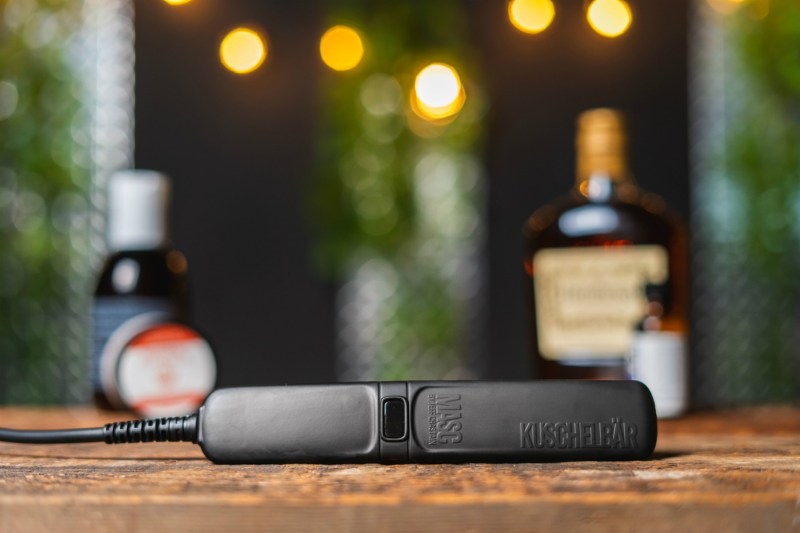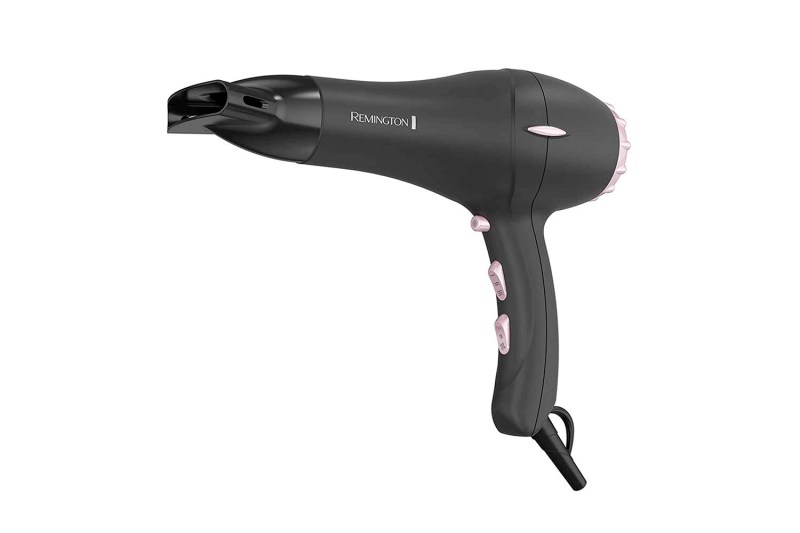Want to find out how to straighten that wild clump of hair on your face? You've come to the right place! In this article, we'll walk you through the easiest ways to straighten your beard, with and without heat.
If you've gone searching for answers yourself, you probably already know that there's an overwhelming number of guides and videos on the web purporting to explain how to straighten your beard. Unfortunately, few of them actually break down the different straightening options step-by-step, which is what we've tried to do it our guide. That way, you can have a clear sense of which beard straightening method best integrates into your daily routine.
Spoiler alert: a dedicated beard straightener, while an investment, is probably the easiest way to get the job done. However, it's far from the only way to effectively straighten your beard.

How to straighten your beard with a heated brush
If you plan on straightening your beard often, purchasing a beard straightener is a solid investment. It will save you time and get the desired look consistently. There are many beard straighteners on the market to decide from, but, to make your decision easier, we recommend the Drybar Baby Brush Crush Mini Heated Straightening Brush.
While this heated mini brush isn’t technically designed for your beard, it gets the job done seamlessly. Drybar’s Baby Brush heats up to 400 degrees, the optimal temperature for straightening and smoothing shorter styles. Plus, it comes with a two-year limited warranty, so you really have nothing to lose.
Step 1: Make sure your beard is dry. Hair is porous, so if it’s still holding water, the heat will singe the hair cuticle, basically cooking it. So get the beard as dry as possible first.
Step 2: Condition the beard. Because you are cooking out a lot of the hair’s moisture, be sure to use an oil-based conditioner, a beard oil, or a beard balm is good. A water-based conditioner will just make the hair coil back up.
Step 3: Create tension. Beyond the hair’s cuticle layer are hydrogen bonds. These bonds are what keep the shape of the hair. Applying heat (like a blow-dryer or hot comb), in combination with tension, allows us to reshape those bonds and our hair.
Step 4: Comb downward. Run the brush through your beard slowly.
Step 5: Preserve and protect. Add a bit of beard oil or balm to style the beard into the shape you want.

How to straighten your beard with a hair dryer
If you already own a hair dryer and brush or comb, you can straighten your beard with these tools as well. A round brush is recommended but a flat comb works as well.
Step 1: Take a section of your hair the same width as the tool you are using; so an inch width of hair if you’re using a 1-inch comb.
Step 2: Start at the bottom of your beard and work your way up to the cheeks, section by section.
Step 3: Turn the comb into the beard as you go.
How to Straighten Your Beard Without Heat
We've gone over ways to get a straight beard look with the help of a heat source, but now we'll tell you how to straighten your beard without heat.
While it does take some work, the process is fairly straightforward. The best way to do it is just by using a brush. Brush your beard hair in a downward motion, as this is the easiest way to do it and it will also lead to a better result. As you keep brushing your beard, you'll eventually train it to grow out the way you want it to, and you can use a trimmer to cut down any stray hairs that aren't falling in line with the rest of your beard.
Here are a few things to keep in mind when you're considering whether to straighten your beard or not: length, natural curl or texture, and any trimmed style. If your beard is at a length you like currently, straightening it will also lengthen it to some degree, so you should consider trimming it, but do so after you straighten it. That way you will know the length it will be straight. The curlier your beard hair is, the more length you will gain when it is straightened. Also, beard hair with a tight natural curl can present more of a challenge to straighten but is not impossible.
You can straighten beard hair with a very tight curl, but it can be tough to maintain and it might never quite lose that natural curliness. Curly beard hair can be controlled through beard grooming products, a beard-straightener brush, the right grooming approach, and a bit of patience. Straightening curly beard hair can be a tall order if your beard is especially curly or especially long, but where there’s a will, there’s a way. You can always consider a slightly shorter cut to reduce some of the curliness that tends to come with longer beard hair, but a beard straightener is an effective temporary option in most cases.
If you have had your beard trimmed at the barbershop, you should be sure to maintain the same style. If you have the beard trimmed while it’s more natural and then straighten it (or vice versa), it may suddenly look messy because the hairs will be at different lengths.
As with all at-home grooming, beard straightening may seem daunting or unusual at first, but you'll only know if you like it after you try it. The more times you try something the easier it gets.
Frequently Asked Questions
How can I make my beard straight?
When it comes to making your beard straight, you have to make a choice as to whether to use heat or not. The heated route tends to yield faster and more consistent results, which is why we're proponents of investing in a heated beard straightener. However, you can also, with a bit of patience, straighten your beard by just using a comb—and it's better for the long term health of your beard hair.
How do I fix my curly beard?
The best way to fix a curly beard is to use a heated tool, like a beard straightener (or a hair dryer). If your beard is especially curly, trying to straighten it using only a comb could take an excessive amount of time and give you negligible results.
Are beard straighteners worth it?
Beard straighteners may be a bit of an investment, especially when compared to the old school brush, but they are well worth it if you want to get quick and consistent results. Our favorite beard straightener is Drybar's Baby Brush Crush Mini Heated Straightening Brush. While it's not technically designed for your beard, it heats up to 400 degrees, the optimal temperature for straightening and smoothing shorter beard styles.




